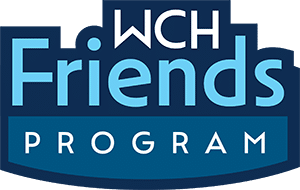
WHAT IS OCCUPATIONAL THERAPY?
Occupational therapy (OT) is a treatment for problems with movement and coordination. It helps people improve motor skills involved in everyday tasks, like writing and getting dressed.
The need for OT can come up at any age and for a wide range of reasons. For instance, there are some lifelong conditions that impact motor skills starting in early childhood. One of them is developmental coordination disorder (DCD).
WHAT OCCUPATIONAL THERAPISTS (OTS) DO
Various health issues can pose barriers to participating in daily activities. Occupational therapists help people:
- Learn new ways of doing things
- Regain skills and develop new ones
- Use materials or equipment that makes life easier
- Adapt their environment to work better for them
These solutions help people do as much as they can – safely and effectively – at home, school, work, and in other settings.
The word “occupational” in occupational therapy can be misleading. This profession is not about vocational counseling or work training. Occupational therapists are health care professionals who help people resume or maintain participation in a variety of tasks – their jobs, leisure, and social activities, getting around, caring for themselves and their home, and much more.
Occupational therapists often work on a team with physiotherapists, but the two roles are distinct. Physiotherapists help people restore physical function; occupational therapists focus on how that function affects the ability to do things that are important to them.
EXAMPLES OF APPLIED OCCUPATIONAL THERAPY
In occupational therapy, there are many activities and exercises, but their application and needs differ from case to case.
The approaches that occupational therapists take to maintain and improve patient participation in daily activities and tasks can be illustrated by specific cases. The following examples explore different situations that may be encountered by therapists.
- Cerebral Palsy in Children
A young child who has cerebral palsy has difficulty learning to dress himself because of limitations in movement and coordination. With his parents, an occupational therapist plans a program to teach the most efficient methods for dressing. Changes to clothing, such as the addition of Velcro closures or elastic shoelaces, may be used to adapt the activity. Methods of practice are taught to the parents. Specific activities are practiced throughout his day to help him improve his motor skills. At preschool, the therapist consults with the teacher to provide information about the child’s abilities and how to change the classroom environment to enhance his functioning.
- Stroke
An older adult who had a mild stroke is experiencing depression and is uncertain whether she can continue to live in her apartment. A community occupational therapist assesses the woman’s interests and required daily activities and develops a plan for engagement in activities in her apartment and in the community. As she participates in these activities, she gains confidence and improves her ability to live independently. The therapist also makes adaptations to the woman’s kitchen, so that she can reach utensils and make her meals easily and safely.
- Spinal Injury
A patient had a spinal injury and, as a result, became wheelchair dependent. She started to become socially isolated, because she couldn’t leave her local area and her friends found it difficult to always travel to her. She was also worried about visiting public places she used to go to, such as pubs, restaurants, and shopping centers, because she was not confident driving her electric wheelchair and using disabled toilets. The occupational therapist work with her and her support workers, firstly to look at public transport options, such as using the tram, and to assess different environments for accessibility. The OT will teach the support workers how to assess new environments that she might want to visit and practice this with them until they are proficient at it.
- Mobility Loss in Hand
A person who lost some function in their hand and fingers. The occupational therapist will focus on helping them regain these functions, typically through exercises.
These exercises are meant not only to help the patient regain strength but also to retrain their brain in performing them. This can also help if the patient has neurological issues. Their body will formulate new ways of “knowing” how to perform certain movements.
OCCUPATIONAL THERAPY SERVICES IN WOOSTER, OH
Our facility at Wooster Community Hospital is called HealthPoint. Through it, we provide caring, compassionate, and effective occupational therapy services to guide you toward optimal health, wellness, and function within your home and community. Contact us at (330) 202-3300 for more information or to arrange your personalized evaluation.

 Cancer Care
Cancer Care
 Rehabilitation
Rehabilitation
 Women's Health
Women's Health
 Behavioral Health
Behavioral Health
 Cardiovascular Care
Cardiovascular Care
 Surgery
Surgery


